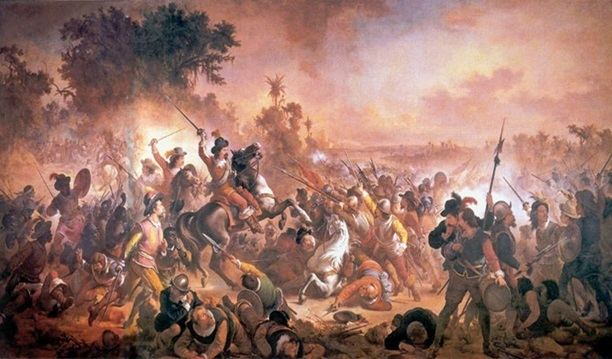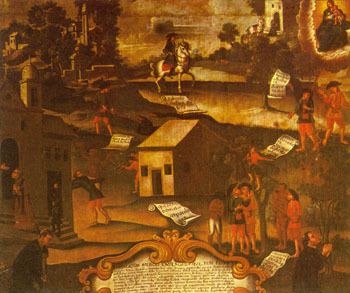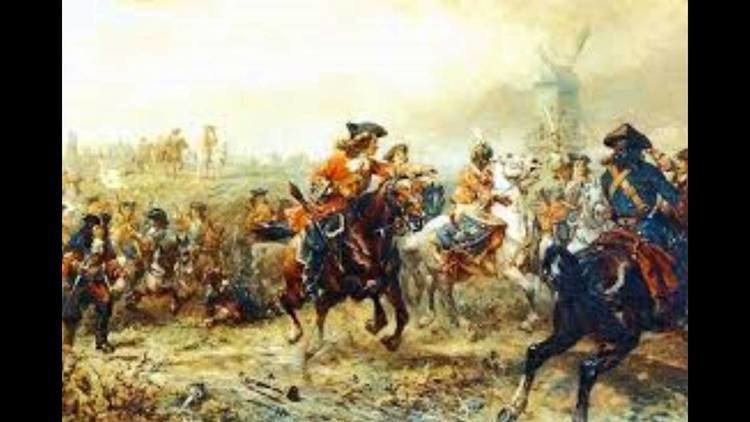 | ||
Results Defeat of the paulistas., Creation of the Captaincy of São Paulo and Minas de Ouro Similar Pernambucan revolt, Guaraní War, Confederation of the Equator, Balaiada, Cabanagem | ||
True hell war of the emboabas
The War of the Emboabas (Portuguese: Guerra dos Emboabas, "newcomers′ war"), was a war waged in the early 18th century between two generations of Portuguese settlers in the viceroyalty of Brazil - then the Captaincy of São Vicente.
Contents

Starting from the village of São Paulo dos Campos de Piratininga (now São Paulo) the Bandeirantes had explored most of southeast and southwest of current Brazil, effectively taking advantage of the union of the Crowns of Portugal and Spain from 1580 to 1640 to incorporate all the former Spanish territories then west of the Tordesilhas Line. Their goal was to capture new Indian slaves (which put them in conflict with the Jesuit Reductions), recapture runaway slaves and find precious minerals.

Their search was rewarded in a then inaccessible area just north of their original Capitania that was to become Minas dos Matos Gerais (now simply Minas Gerais). The problem was that the mines, while rich, were in a vast area they couldn't effectively settle, so it attracted a gold rush from Portugal. The newcomers, called Emboabas, found an alternative, shorter route to the sea; the Caminho Novo das Minas dos Matos Gerais to São Sebastião do Rio de Janeiro on Guanabara Bay, bypassing and alienating the original discoverers.

The Bandeirantes, or simply Paulistas, tried to assert rights of precedence but were defeated. As a result, the provinces of Minas Gerais and Rio de Janeiro were formed, their capital cities of Vila Rica do Ouro Preto and São Sebastião do Rio de Janeiro, respectively, became the new centers of power in the vice-kingdom of Brazil. São Sebastião (later shortened to its present name of Rio de Janeiro) became the capital city of the viceroyalty and later of the United Kingdom of Portugal, Brazil and the Algarves.

The Emboabas
As soon as news of the discovery of gold spread thousands of people moved to the area and became known pejoratively as "Emboabas". The term is derived from the tupi mbóaba which literally means "hairy leg" (mbo (leg) + tab (hairy)). Originally the term referred to birds with feathered legs and as, unlike the pioneers, the outsiders always wore trousers and they began to be referred to this way.
Alternatively, according to the Dicionário Houaiss emboaba could be derived from the Tupi words mbo (do) and tab (hurt) meaning "those who invade or attack" and would be applied to a group rather than an individual.
